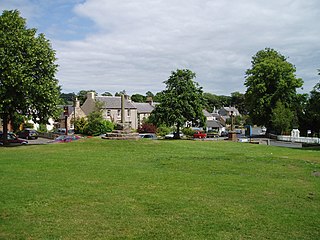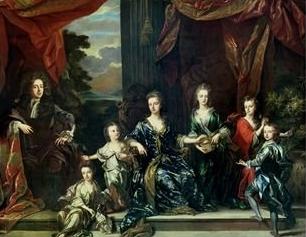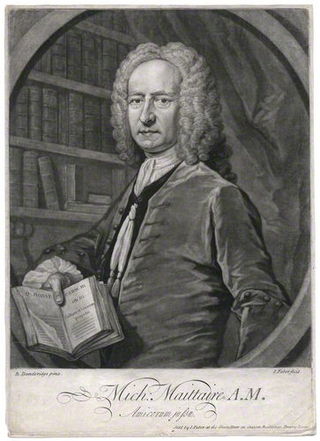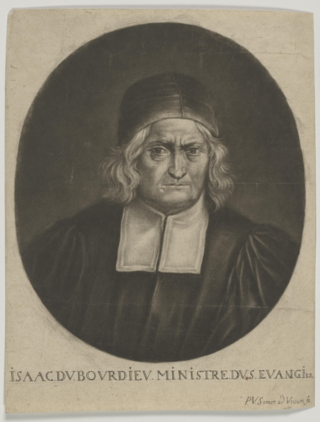Related Research Articles
The Bye Plot of 1603 was a conspiracy, by Roman Catholic priests and Puritans aiming at tolerance for their respective denominations, to kidnap the new English king, James I of England. It is referred to as the "bye" plot, because at the time it was presented as a minor component of a larger plot.

The Bangorian Controversy was a theological argument within the Church of England in the early 18th century, with strong political overtones. The origins of the controversy lay in the 1716 posthumous publication of George Hickes's Constitution of the Catholic Church, and the Nature and Consequences of Schism. In it, Hickes, as Bishop of Thetford, on behalf of the minority non-juror faction that had broken away from the Church of England after the Glorious Revolution, excommunicated all but the non-juror churchmen. Benjamin Hoadly, the Bishop of Bangor, wrote a reply, Preservative against the Principles and Practices of Non-Jurors; his own Erastian position was sincerely proposed as the only test of truth.
John Clarke (1682–1757) was an English natural philosopher and Dean of Salisbury from 1728 to his death in 1757.

Ancrum is a village in the Borders area of Scotland, 5 km (3.1 mi) northwest of Jedburgh.

John Closterman was a Westphalian portrait painter of the late 17th and early 18th centuries. His subjects were mostly European noblemen and their families.

Michel Maittaire was a French-born classical scholar and bibliographer in England, and a tutor to Lord Philip Stanhope. He edited an edition of Quintus Curtius Rufus, later owned by Thomas Jefferson. His works included a grammar of English (1712).
John Milner (1628–1702) was an English clergyman, known as a nonjuring minister, scholar and opponent of John Locke.
William Coward (1648–1738) was a London merchant in the Jamaica trade, remembered for his support of English Dissenters, particularly his educational philanthropy.
John Shower (1657–1715) was a prominent English nonconformist minister.
Thomas Hoy (1659-1718) was an English physician and poet.
The Tracts for the Times were a series of 90 theological publications, varying in length from a few pages to book-length, produced by members of the English Oxford Movement, an Anglo-Catholic revival group, from 1833 to 1841. There were about a dozen authors, including Oxford Movement leaders John Keble, John Henry Newman and Edward Bouverie Pusey, with Newman taking the initiative in the series, and making the largest contribution. With the wide distribution associated with the tract form, and a price in pennies, the Tracts succeeded in drawing attention to the views of the Oxford Movement on points of doctrine, but also to its overall approach, to the extent that Tractarian became a synonym for supporter of the movement.
Peter Gooden was an English Roman Catholic priest, who came to prominence as a controversialist during the reign of James II.
James Bowen was an English painter and topographer. Bowen was a native of Shrewsbury, where he died. The antiquarian John Bowen was his son.

Isaac Dubourdieu (c. 1597–1700?), was a French Reformed minister. He left France for England with his two sons.
The Socinian controversy in the Church of England was a theological argument on christology carried out by English theologians for around a decade from 1687. Positions that had remained largely dormant since the death in 1662 of John Biddle, an early Unitarian, were revived and discussed, in pamphlet literature.

Thomas Prior was an Irish author, known as the founder of the Royal Dublin Society.

The Convocation of 1563 was a significant gathering of English and Welsh clerics that consolidated the Elizabethan religious settlement, and brought the Thirty-Nine Articles close to their final form. It was, more accurately, the Convocation of 1562/3 of the province of Canterbury, beginning in January 1562.
References
- . Dictionary of National Biography . London: Smith, Elder & Co. 1885–1900.
- Attribution
![]() This article incorporates text from a publication now in the public domain : "Briercliffe, John". Dictionary of National Biography . London: Smith, Elder & Co. 1885–1900.
This article incorporates text from a publication now in the public domain : "Briercliffe, John". Dictionary of National Biography . London: Smith, Elder & Co. 1885–1900.